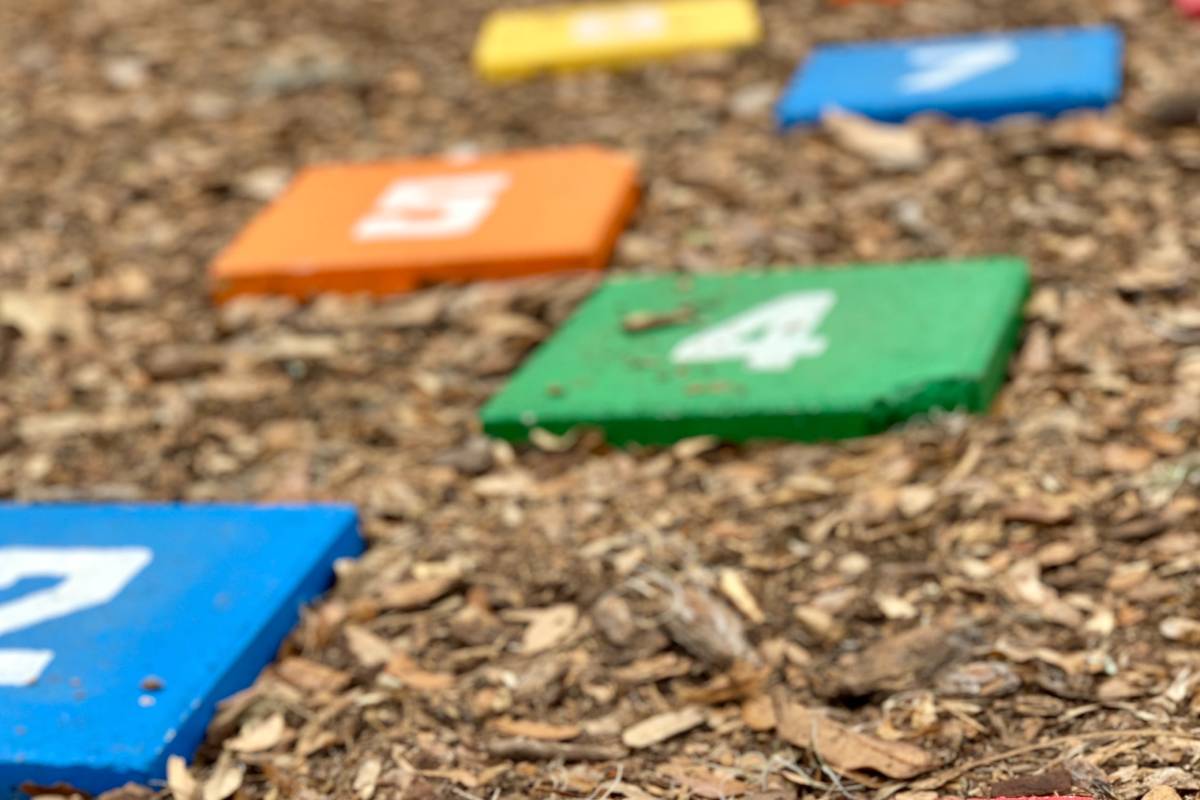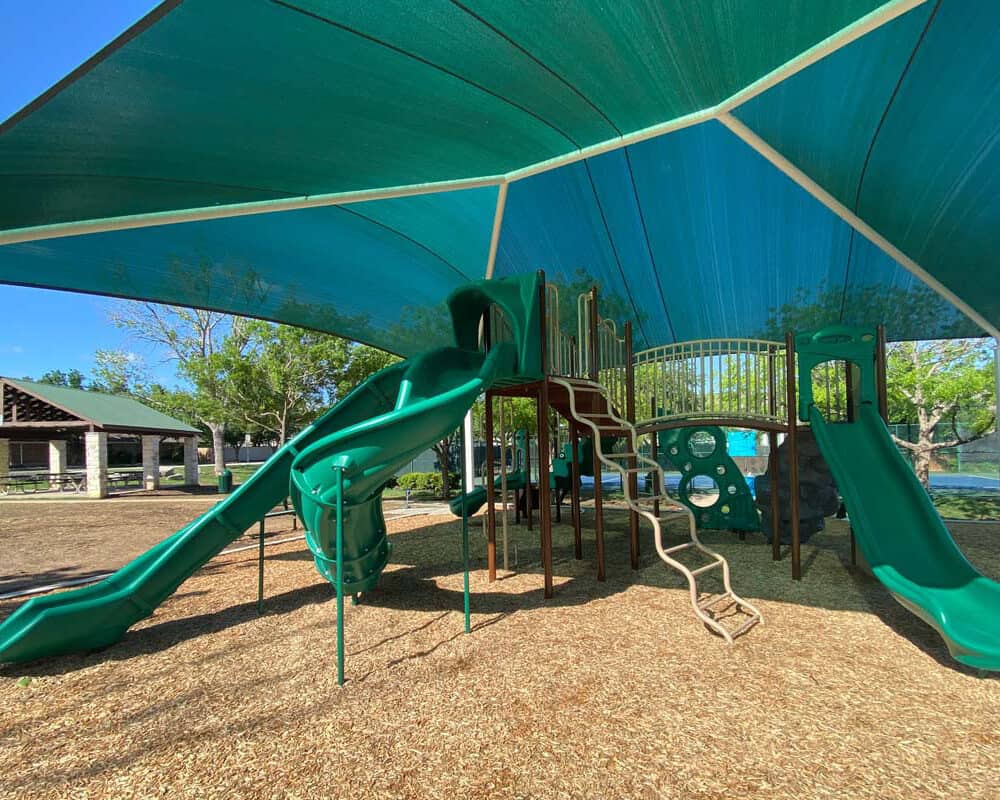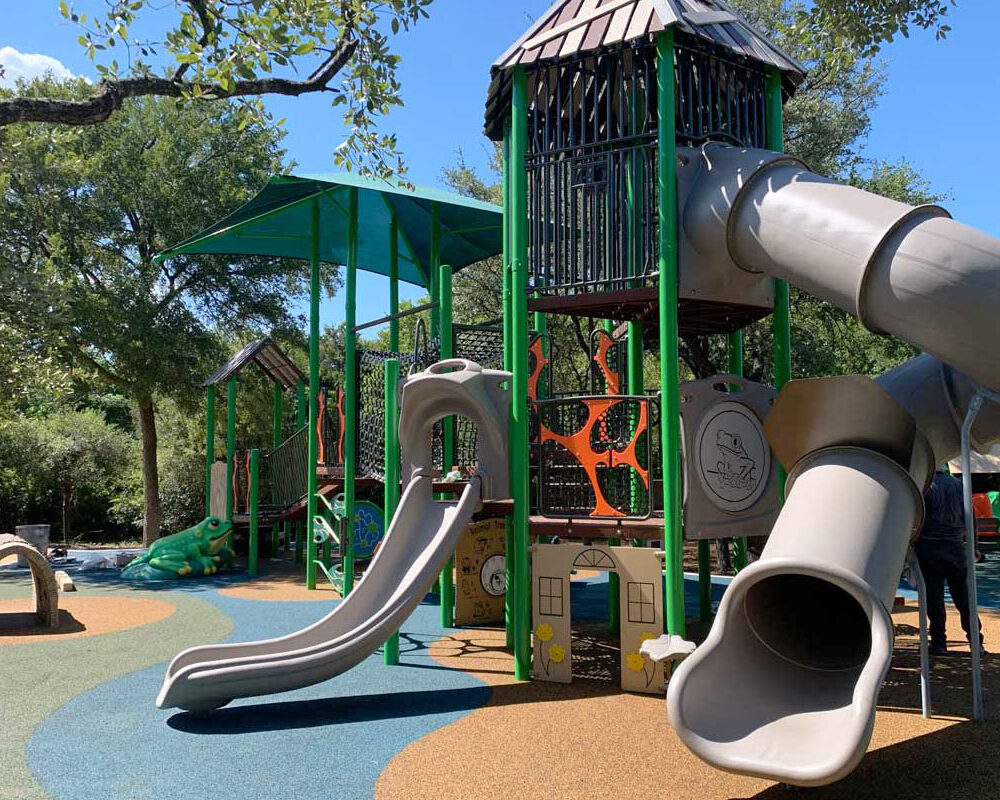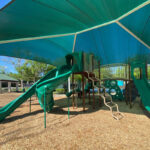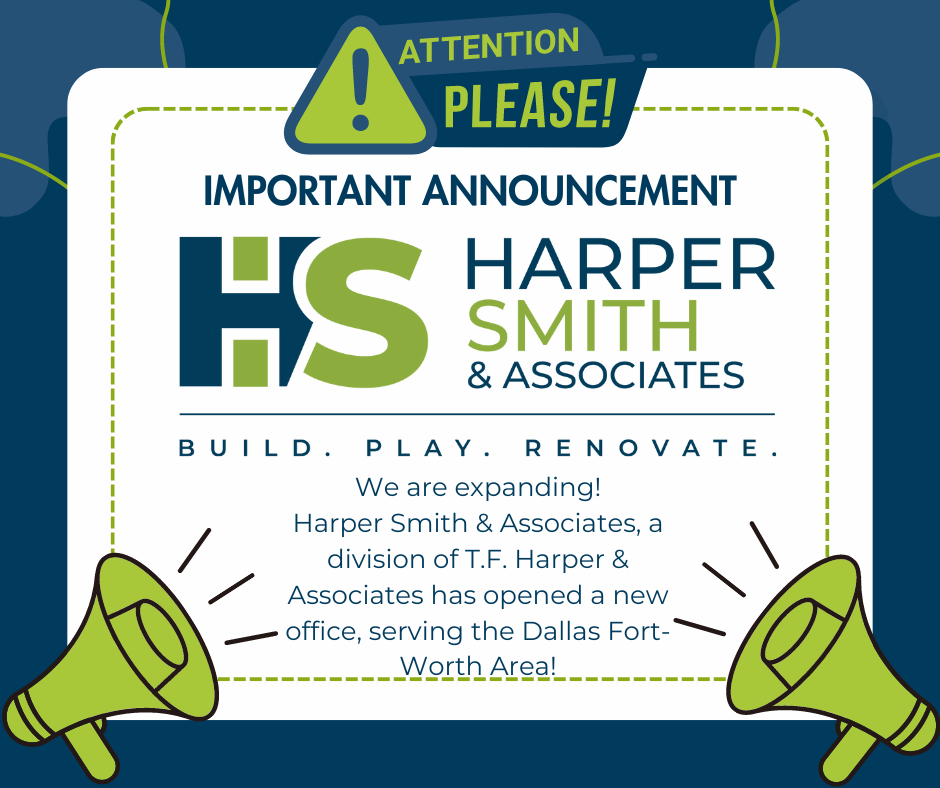When choosing a playground surface, you need to choose one that is safe for children and also ADA approved. There are many surfaces that can be used on playgrounds which vary in terms of cost, availability, longevity and required maintenance. Choosing the right surface material for your outdoor playground is crucial for the future playability and usability of the play area.
A good playground surfacing material will have all of the following characteristics:
- No-tipping potential
- Hard wearing surface
- Texture that’s comfortable to grip when wet or dry
- Non-slip properties under humid conditions
- Long lasting durability
Below, we’ll take a look at some of the best options out there to help you choose the best one for your needs and budget.
1. Poured-In-Place Rubber
This is the most common rubber surfacing material. It’s durable, low maintenance, cost effective if properly installed, and also ADA approved. The rubber is poured onto a leveled sub-grade of compacted/shredded concrete, sand or other suitable materials to a depth of 1 inch to 4 inches. The rubber can be colored, or the material can be painted after installation. Poured-in-place rubber is an excellent choice for playground surfacing due to its durability and flexibility.
2. Rubber Tiles
Rubber tiles are another popular surface material for playgrounds and have many advantages over poured-in place rubber. Rubber tiles are modular units that are installed by interlocking each unit at 90 degree angles with adjacent units (like a jigsaw puzzle). There are many advantages to using rubber tiles for school playground surfacing.
- They’re easier and faster to install than poured-in-place rubber.
- They’re available in a variety of colors that can be coordinated with the playground equipment color schemes.
- Some manufacturers even provide an acoustical option in which the joints are filled with sand or gravel, adding to the acoustic sound dampening that’s provided by rubber.
3. Rubber Rolls
Rubber rolls are manufactured in roll form and can be installed like a carpet. Rubber rolls are relatively low-cost, easy to install and long lasting. They’re soft and comfortable for children to play on, ADA approved, and can easily be cut or trimmed to fit the shape of your playground equipment. Some schools prefer rolled rubber over poured-in-place or tiles, because the seams of rolled rubber are less noticeable than those found on rubber tiles which tend to stand out.
4. Synthetic Turf
With the rise in popularity of synthetic turf in the last few years, many schools have started using synthetic turf for playground surfacing. These surfaces are made from a durable, UV-stabilized polyethylene polymer underlayment.
Synthetic turf is relatively expensive compared with rubber tiles, but it has more durability and resilience. This makes it ideal for play areas where light wear and tear is required, such as ball fields or multi-use athletic fields that are used outside during the summertime. It gives a natural look and texture to an outdoor sports turf.
5. Shredded Rubber
Shredded rubber playground surfaces are another good play surfacing material. They’re made from recycled tires that are shredded into small pieces using a high-speed shredder. These surfaces provide comfort and cushion to the joints of children and workers.
The advantages of using shredded rubber include:
- Soft cushioning properties for good fall protection
- Quieter than other surface materials
- Better traction than poured in place or tiles due to the small granule size, adding another level of safety
6. Wood Chips
Wood Chips are one of the most common surface materials for playgrounds. The main reason they’re so common is their availability, cheap cost and easy installation. Wood Chips are commonly used in public parks and schools to provide a softer landing surface for children. Wood Chips have the consistency of soil and can be used as an anchor under rubber or tiles (instead of sands) to support the rubber or tile if it’s not properly installed on a compacted subgrade.
Advantages of using wood chips include:
- They’re light-weight and easy to install.
- They’re Environmentally friendly as they are made from recycled timbers.
- They’re easier to maintain than other types of playground surfacing surfaces.
Conclusion
Choosing the right surface material for your playground is an important decision for the overall safety and enjoyment of your children. The main importance when deciding on the playground surfacing is that it’s safe for your child and meets ADA requirements. With so many different types of playground surfaces available today, you’re sure to find a surface that fits your budget and needs.

